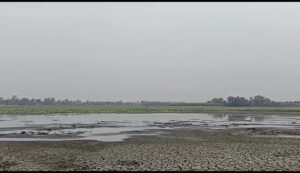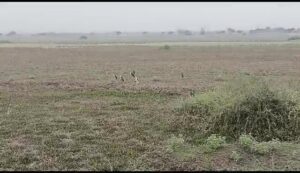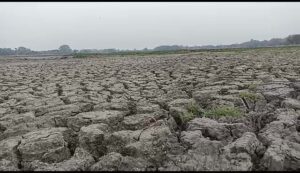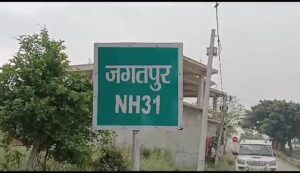By Avijit Biswas
Bhagalpur: The prolonged summer heat has led to drying of waterbodies in this part of the state in many cases leading to serious adverse effect on bird habitats located in and around the water bodies.
A major wetland “Jagatpur Jheel” abode of large number of migratory and local birds located in gangetic belt at outskirts of city here is among such waterbodies that have become dry due to excessive heat and absence of rainfall. The local bird watchers are of the view that drying of wetlands could trigger migration of birds to places where water and food is available.
In case of Jagatpur Jheel that figures in National Biodiversity Authority list of Other Effective Area-based Conservation Measure (OECM) sites, it is anticipated prevailing uncongenial conditions could lead to short distance migration of birds from their preferred habitat.
As per available information the migratory birds that arrive at Jagatpur Jheel in large number during winter generally leave the area by this time of year barring those who due to illness or other reasons are unable to fly back to their native places. The wetland is presently mainly abode of local birds.
Arvind Mishra, state coordinator of Indian Bird Conservation Network (IBCN) admitting severity of summer heat had been comparatively more this year compared to previous years said this might have resulted in wetlands becoming dry in number of cases.
However reduced water availability in waterbodies and wetlands is not an unusual situation during peak summer, he added. The IBCN state coordinator said reduced water availability or drying of wetlands during this time of year would particularly adversely effect water birds and lead to their migration to places where they could get food and water.

Taking into consideration the period between August and September is breeding season of water birds like Red Wattled Lapwing, Bronze Winged Jacana, Grey Headed Swamphen, Common Moorhen, Little Grebe, Pheasant Tailed Jacana beside others, the possibility of their migration in search of water and food cannot be ruled out, he added.


Mishra felt in case of avian population residing in and around Jagatpur Jheel the drying of wetland is unlikely to trigger their long-distance migration. In light of the fact makhana cultivation and pisciculture is undertaken at number of places located in northern side of river Ganga by creating artificial waterbodies besides the river located close to Jagatpur Jheel would not necessitate long distance for birds residing in and around the wetland, he said.

The IBCN state coordinator informed prolonged summer effect has reduced water availability in majority of waterbodies and wetlands however there are some waterbodies and wetlands in state where water is still sufficient for sustenance of bird population.
In this context he cited example of Gokul Jalasay in Buxar district where water is sufficient for survival of avian population despite lowering of water level. Meanwhile as per media reports with no change in weather conditions sixteen out of total twenty-three major reservoirs of dams in state have become dry. The availability of water in remaining reservoirs is less than twenty percent of their capacity at present.
Read more
Writer Avijit Biswas, former principal correspondent of Hindustan Times Bhagalpur bureau, can be contacted at biswasavijit@yahoo.com
Contact number (mobile): +919431095516




